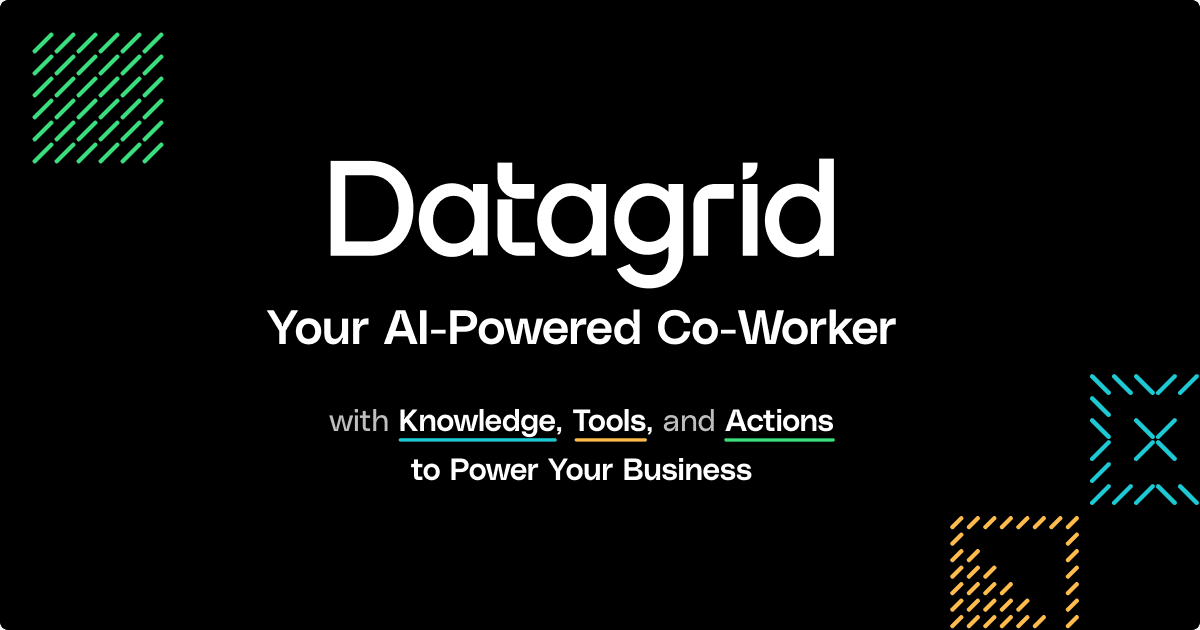What Are the Different Types of AI Agent Architectures?
Understanding AI agent architectures can seem daunting, but breaking them down into categories makes it easier to grasp. Here are the main types you'll encounter:
Reactive Architectures
Reactive architectures operate by mapping situations directly to actions. Think of them as the "reflexes" of AI. They don't rely on past experiences or future predictions, making them quick and efficient.
- Simplicity and Speed: These agents are straightforward and fast, which is ideal for real-time systems like autonomous robots.
- Limitations: They can't plan ahead or learn from past experiences, which can be a drawback in more complex scenarios.
- Examples: Line-following robots that navigate based on sensor input and video game characters that react instantly to player actions.
Deliberative Architectures
Deliberative architectures take a more thoughtful approach. They use internal symbolic models to plan and reason, allowing for strategic decision-making.
- Strategic Decisions: These agents can plan future actions and make informed decisions.
- Challenges: High computational requirements and slower response times can be issues.
- Examples: Intelligent personal assistants that plan tasks and autonomous vehicles that navigate complex environments.
Hybrid Architectures
Hybrid architectures combine the best of both reactive and deliberative worlds. They use a hierarchical structure where lower layers handle immediate reactions and higher layers manage planning and reasoning.
- Balanced Approach: This setup balances quick responses with long-term planning.
- Examples: The 3T architecture and TouringMachines, which use layered approaches to handle complex tasks.
Cognitive Architectures
Cognitive architectures aim to model human cognition. These are the most complex and capable of learning and adapting over time.
- Learning and Adaptation: These agents can learn from their experiences and adapt to new situations.
- Applications: Used in advanced problem-solving and decision-making tasks.
- Examples: SOAR and ACT-R, which are designed to simulate human thought processes.
Each type of AI agent architecture has its strengths and weaknesses, making them suitable for different applications. Reactive architectures are great for simple, real-time tasks, while deliberative and cognitive architectures excel in more complex scenarios. Hybrid architectures offer a balanced approach, combining the strengths of both reactive and deliberative systems.
How Do AI Agents Perceive and Interact with Their Environment?
For AI agents to function effectively, they need to perceive their surroundings and interact with them. This involves gathering information and responding appropriately. Let's break down how this works.
Perception Mechanisms
Perception mechanisms are the ways AI agents use sensors to gather information from their environment. These sensors can be of various types, each serving a specific purpose.
- Types of Sensors: Visual sensors (cameras) capture images, auditory sensors (microphones) pick up sound, and tactile sensors detect physical touch.
- Data Processing: The data collected by these sensors is processed to create a coherent understanding of the environment. This information is then used to make informed decisions.
Interaction Strategies
Once an AI agent has perceived its environment, it needs to interact with it. Interaction strategies define how these agents act based on the data they have gathered.
- Actuators and Effectors: Actuators are devices that enable physical actions, like moving a robotic arm, while effectors are the components that perform these actions.
- Reactive vs. Deliberative Agents: Reactive agents respond immediately to stimuli, while deliberative agents plan their actions based on internal models. This difference impacts how they interact with their surroundings.
Feedback Loops
Feedback loops are crucial for refining an AI agent's behavior. They allow the agent to learn from its actions and improve over time.
- Adjusting Behavior: By analyzing the outcomes of its actions, an agent can adjust its future behavior to be more effective.
- Learning and Adaptation: Feedback loops are essential for learning and adapting to new situations, making the agent more versatile and capable.
Understanding how AI agents perceive and interact with their environment is key to grasping their architecture. It involves a combination of sensors, data processing, interaction strategies, and feedback loops. This complex interplay enables AI agents to function effectively in dynamic environments.
What Are the Key Components of AI Agent Architectures?
To fully appreciate AI agent architectures, it's essential to understand their core components. Each component plays a unique role in how an AI agent functions and interacts with its environment.
Profiling Module
The profiling module helps define an AI agent’s role and function within a specific context. Think of it as the agent's identity card.
- Creating Agent Profiles: There are various ways to create these profiles. Handcrafting involves manually defining the agent’s characteristics. LLM-generation uses large language models to generate profiles, while dataset alignment aligns the agent's profile with specific datasets.
- Influence on Other Modules: The profile directly affects other modules like memory and planning, shaping how the agent stores information and strategizes.
Memory Module
Memory is crucial for AI agents to store and recall past behaviors. Without memory, an agent would be like a goldfish, forgetting everything in the blink of an eye.
- Types of Memory: AI agents use short-term memory for immediate tasks and long-term memory for storing learned experiences.
- Memory Formats: Information can be stored in various formats, such as natural languages, embeddings, and databases, depending on the agent’s needs.
Planning Module
The planning module is where the magic of strategy happens. This module enables AI agents to think ahead and plan for complex tasks.
- Planning Without Feedback: This involves breaking down tasks into subgoals and considering multiple paths to achieve these goals.
- Planning With Feedback: Here, the agent adjusts its plans based on feedback from the environment, humans, or its own models.
Action Module
The action module is the muscle of the AI agent, translating decisions into specific actions.
- Action Targets: These can vary widely, from completing tasks and engaging in dialogues to exploring environments.
- Action Strategies: Agents might use memory recollection, engage in multi-round interactions, or adjust actions based on feedback to achieve their goals.
Understanding these components helps you grasp how AI agents operate and interact with their surroundings. Each module plays a specific role, contributing to the agent’s overall functionality and effectiveness.
How Do AI Agents Perceive and Interact with Their Environment?
For AI agents to function effectively, they need to perceive their surroundings and interact with them. This involves gathering information and responding appropriately. Let's break down how this works.
Perception Mechanisms
Perception mechanisms are the ways AI agents use sensors to gather information from their environment. These sensors can be of various types, each serving a specific purpose.
- Types of Sensors: Visual sensors (cameras) capture images, auditory sensors (microphones) pick up sound, and tactile sensors detect physical touch.
- Data Processing: The data collected by these sensors is processed to create a coherent understanding of the environment. This information is then used to make informed decisions.
Interaction Strategies
Once an AI agent has perceived its environment, it needs to interact with it. Interaction strategies define how these agents act based on the data they have gathered.
- Actuators and Effectors: Actuators are devices that enable physical actions, like moving a robotic arm, while effectors are the components that perform these actions.
- Reactive vs. Deliberative Agents: Reactive agents respond immediately to stimuli, while deliberative agents plan their actions based on internal models. This difference impacts how they interact with their surroundings.
Feedback Loops
Feedback loops are crucial for refining an AI agent's behavior. They allow the agent to learn from its actions and improve over time.
- Adjusting Behavior: By analyzing the outcomes of its actions, an agent can adjust its future behavior to be more effective.
- Learning and Adaptation: Feedback loops are essential for learning and adapting to new situations, making the agent more versatile and capable.
Understanding how AI agents perceive and interact with their environment is key to grasping their architecture. It involves a combination of sensors, data processing, interaction strategies, and feedback loops. This complex interplay enables AI agents to function effectively in dynamic environments.
How Do Single-Agent and Multi-Agent Architectures Differ?
Understanding the difference between single-agent and multi-agent architectures can help you grasp how various AI systems manage tasks. Each approach has its strengths and weaknesses, making them suitable for different applications.
Single-Agent Architectures
Single-agent architectures involve a single AI entity tasked with managing and executing tasks. This approach is straightforward and often used in scenarios where precision and control are paramount.
- High Precision and Control: With only one agent to manage, you can achieve high levels of precision and control in well-defined tasks.
- Limitations: The main drawback is the lack of collaboration and feedback from other agents, which can limit the system's ability to handle complex tasks.
- Examples: Personal news curator agents that gather and present news articles tailored to your interests.
Multi-Agent Architectures
Multi-agent architectures consist of multiple AI entities working together to achieve common goals. This collaborative approach leverages the strengths of different agents to handle more complex tasks.
- Collaboration and Expertise: Multiple agents can bring diverse expertise to the table, making it easier to handle complex problems that require different skill sets.
- Challenges: Ensuring effective communication and coordination among agents can be tricky, requiring sophisticated algorithms and protocols.
- Examples: Complex event planning systems where specialized AI agents handle different aspects like scheduling, resource allocation, and logistics.
By understanding these two architectures, you can better appreciate how AI systems are designed to tackle different types of tasks. Single-agent architectures offer simplicity and control, while multi-agent systems excel in collaborative and complex environments.
What Are the Different Types of AI Agent Architectures?
AI agent architectures come in various forms, each suited to different applications and challenges. Understanding these types can help you choose the right architecture for your needs.
Reactive Architectures
Reactive architectures are designed to respond to specific stimuli with predefined actions. They don't think ahead or learn from past experiences, making them quick and efficient.
- Simplicity and Speed: These architectures are straightforward and fast, ideal for real-time applications.
- Limitations: They lack long-term planning and learning capabilities.
- Examples: Line-following robots and video game characters that react to player actions.
Deliberative Architectures
Deliberative architectures use internal models to plan and reason, allowing for more strategic decision-making.
- Strategic Decisions: These agents can plan future actions and make informed decisions.
- Challenges: High computational requirements and slower response times can be drawbacks.
- Examples: Intelligent personal assistants and autonomous vehicles.
Hybrid Architectures
Hybrid architectures combine elements of both reactive and deliberative systems, offering a balanced approach.
- Balanced Approach: Lower layers handle immediate reactions, while higher layers manage planning and reasoning.
- Examples: The 3T architecture and TouringMachines.
Cognitive Architectures
Cognitive architectures aim to model human cognition, making them the most complex and adaptable.
- Learning and Adaptation: These agents can learn from experiences and adapt to new situations.
- Applications: Used in advanced problem-solving and decision-making tasks.
- Examples: SOAR and ACT-R.
Each type of architecture has its own set of strengths and weaknesses, making them suitable for different applications. Reactive architectures are great for simple tasks, while deliberative and cognitive architectures excel in more complex scenarios. Hybrid architectures offer a balanced approach, combining the strengths of both reactive and deliberative systems.
How Do AI Agents Perceive and Interact with Their Environment?
AI agents need to perceive their environment and interact with it to function effectively. This involves gathering information and responding appropriately.
Perception Mechanisms
Perception mechanisms involve using sensors to gather information from the environment. Different types of sensors serve various purposes.
- Types of Sensors: Visual sensors capture images, auditory sensors pick up sound, and tactile sensors detect physical touch.
- Data Processing: The collected data is processed to create a coherent understanding of the environment, which is then used to make informed decisions.
Interaction Strategies
Once an AI agent has perceived its environment, it needs to interact with it. Interaction strategies define how these agents act based on the gathered data.
- Actuators and Effectors: Actuators enable physical actions, like moving a robotic arm, while effectors perform these actions.
- Reactive vs. Deliberative Agents: Reactive agents respond immediately to stimuli, while deliberative agents plan their actions based on internal models.
Feedback Loops
Feedback loops are essential for refining an AI agent's behavior. They allow the agent to learn from its actions and improve over time.
- Adjusting Behavior: By analyzing the outcomes of its actions, an agent can adjust its future behavior to be more effective.
- Learning and Adaptation: Feedback loops are crucial for learning and adapting to new situations, making the agent more versatile and capable.
Understanding how AI agents perceive and interact with their environment is key to grasping their architecture. It involves a combination of sensors, data processing, interaction strategies, and feedback loops. This complex interplay enables AI agents to function effectively in dynamic environments.
What Are the Key Components of AI Agent Architectures?
To fully appreciate AI agent architectures, it's important to understand their core components. Each plays a unique role in how an AI agent functions and interacts with its environment.
Profiling Module
The profiling module helps define an AI agent’s role and function within a specific context. Think of it as the agent's identity card.
- Creating Agent Profiles: There are various ways to create these profiles. Handcrafting involves manually defining the agent’s characteristics. LLM-generation uses large language models to generate profiles, while dataset alignment aligns the agent's profile with specific datasets.
- Influence on Other Modules: The profile directly affects other modules like memory and planning, shaping how the agent stores information and strategizes.
Memory Module
Memory is crucial for AI agents to store and recall past behaviors. Without memory, an agent would be like a goldfish, forgetting everything in the blink of an eye.
- Types of Memory: AI agents use short-term memory for immediate tasks and long-term memory for storing learned experiences.
- Memory Formats: Information can be stored in various formats, such as natural languages, embeddings, and databases, depending on the agent’s needs.
Planning Module
The planning module is where the magic of strategy happens. This module enables AI agents to think ahead and plan for complex tasks.
- Planning Without Feedback: This involves breaking down tasks into subgoals and considering multiple paths to achieve these goals.
- Planning With Feedback: Here, the agent adjusts its plans based on feedback from the environment, humans, or its own models.
Action Module
The action module is the muscle of the AI agent, translating decisions into specific actions.
- Action Targets: These can vary widely, from completing tasks and engaging in dialogues to exploring environments.
- Action Strategies: Agents might use memory recollection, engage in multi-round interactions, or adjust actions based on feedback to achieve their goals.
Understanding these components helps you grasp how AI agents operate and interact with their surroundings. Each module plays a specific role, contributing to the agent’s overall functionality and effectiveness.
How Do AI Agents Make Decisions and Plan Actions?
AI agents need to decide on actions and plan tasks to function effectively. This involves evaluating options and forming strategies to achieve their goals.
Decision-Making Processes
Decision-making is at the heart of how AI agents operate. They use various algorithms to choose the best course of action based on the information available.
- Algorithms: Decision trees and neural networks are common methods. Decision trees map out possible outcomes, while neural networks learn from data to make predictions.
- Evaluating Options: Agents assess different possibilities and select the one that best meets their objectives. This often involves weighing the pros and cons of each option.
Planning Techniques
Planning is crucial for AI agents to achieve their goals. It involves breaking down tasks into manageable steps and forming strategies to complete them.
- Task Decomposition: This approach divides a complex task into smaller, more manageable sub-tasks. Each sub-task is easier to handle and can be tackled one at a time.
- Multi-Plan Selection: Sometimes, multiple plans are created, and the agent selects the most suitable one based on the current situation.
Examples of Decision-Making and Planning
AI agents use decision-making and planning in various real-world applications. These functionalities are vital for their effectiveness.
- Autonomous Vehicles: These vehicles make real-time decisions about navigation and obstacle avoidance, planning routes to reach their destinations safely.
- Intelligent Assistants: Personal assistants like those on your smartphone plan tasks and make decisions based on your preferences and schedule.
Effective decision-making and planning are essential for AI agents to perform their tasks successfully. Whether navigating a busy street or managing your daily tasks, these capabilities enable AI agents to function efficiently and adapt to changing conditions.













